Contact Stansberry - ";
echo " there is a problem w/ your write-up.\n";
return ;
}
$row = mysql_fetch_array($result);
$title = $row["title"];
$princ = $row["principal"];
$deputy= $row["deputy"];
$campn0 = $row["campn0"];
$aorkeys = $row["aorkeys"];
// get real name of principal, deputies
$princ = ioc_get_person($princ);
$princ = $princ[0];
$deps = explode(",",$deputy);
foreach ($deps as $depty) {
$depty = trim($depty);
$depty = ioc_get_person($depty);
$depty = $depty[0];
$depty = explode(",",$depty);
$depty = $depty[0]; // last names only
$deplist[] = $depty;
}
$deplist = implode(", ", $deplist);
$caid = sprintf("%03d",$caid);
$file = "mips-".$caid.$campn.".analysis.php";
// END PHP.
?>
<? echo "MIPS-$caid, Campaign $campn IOC/SV Analysis"; ?>
Principal:
Deputy:
Analyst:
AORKEYS:
Last Updated:
Task Outcome Summary
- DATA STATUS: Nominal
- TASK OUTCOME: Nominal
Abstract
This task provides a comparison of 24 micron dark images at all
allowed exposure times, in order to ensure that any scattered light
component is negligible, and to verify the intended use of 10-second darks
alone for all future calibration observations. The data at all exposure
times are nearly identical in both counts and illumination pattern
to ground-test darks, indicating very little or no scattered light
contaminating the on-orbit darks. The planned use of 10-second darks
for routine calibration of all data should be satisfactory.
Analysis
All data were processed with DAT version 2.15 in order to derive calibrated
images. The 24 micron images were coadded using mips_enhancer with
the dark flag turned on.
Results
24 µm Data
Figure 1 shows the coadded dark images at each exposure time. The illumination
pattern and mean counts are nearly identical to darks obtained on the ground.
The changing illumination pattern with exposure time is probably due to
the low-flux nonlinearity in readout 4 (see the
jailbar report).
The mean counts are higher in the shorter exposures, as was seen on
the ground. Examination of RAW data ramps (Fig. 2) shows that
the second read for pixels near the bottom of the array is noticeably lower
than the other reads, which artificially inflates the fitted slopes
when the total number of reads is small. Thus, what appears to be amplifier
glow on the bottom of the 3- and 4-second exposures is not real.
The read 2 offset should not affect the calibration since it will be washed out
in sky images where even the lowest backgrounds are a factor of ~100 larger
than the dark current. Using slopes in the top half of the array only,
the dark counts are nearly the same for all exposure times
(1.8, 1.8, 1.4, and 1.4 DN/s for 3, 4, 10, and 30 seconds, respectively).
There is virtually no scattered light visible in the dark images;
Figure 3 shows the residual image from subtraction of a ground dark from
the on-orbit dark with the same exposure time. There is no illumination
gradient, as was seen when the thermal background was high, and the residual
counts are consistent with typical dark current variations (+/- 0.5 DN/s)
(see also the results from MIPS-950D2, which are similar).
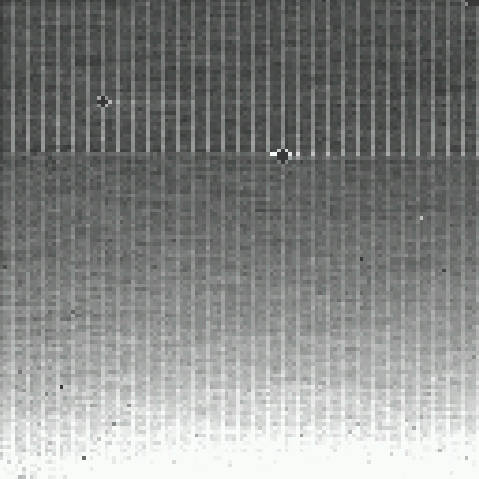
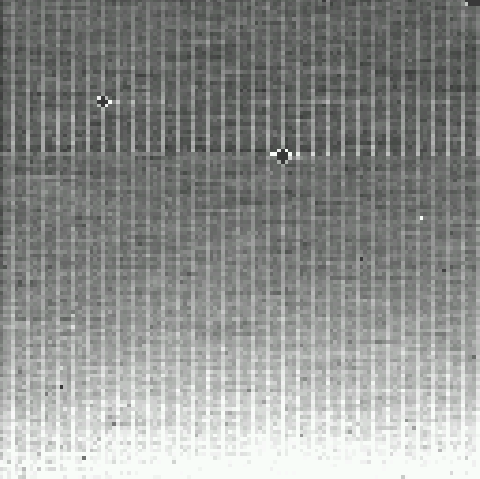

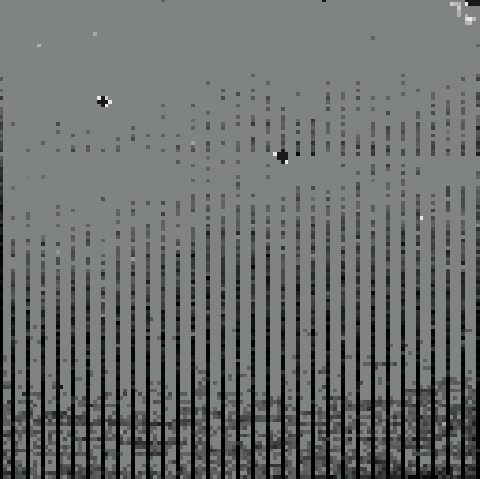
Figure 1: Coadded 24 micron darks: 3-second exposures (top left),
4-second exposures (top right), 10-second exposures (bottom left), 30-second
exposures (bottom left).
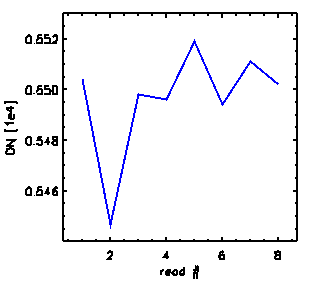
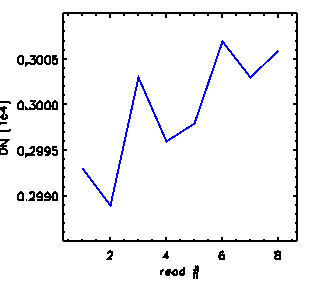
Figure 2: RAW data ramps for pixel (55,2) (left) and pixel (55,61) (right).
Note the offset at read #2 for pixel (55,2), which is typical of pixels at
the bottom of the array. The offset slowly decreases relative to the rest of
the ramp for pixels further from the bottom of the array.
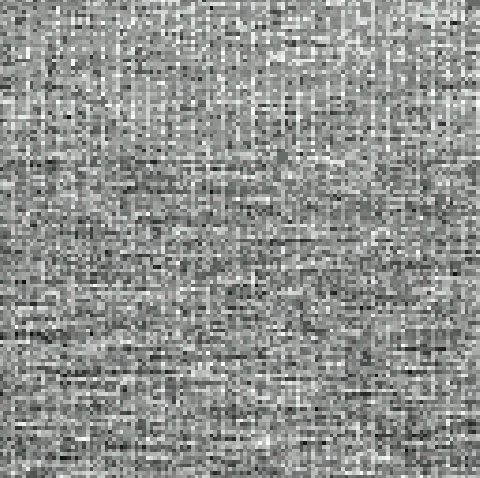
Figure 3: Residual image of the on-orbit 3s dark subtracted by
a ground dark of the same exposure time.
Conclusions
Due to the lack of scattered light, and the similarity to ground data,
suitable dark calibration images can be obtained in orbit.
Taking into account the read-2 bias in the slope calculations at short
exposure times, the dark current is roughly 1.5 DN/s at all exposure times;
thus, we can proceed with the planned use of only 10-second darks
for routine calibration.
Output and Deliverable Products
None
Actions Following Analysis
None










